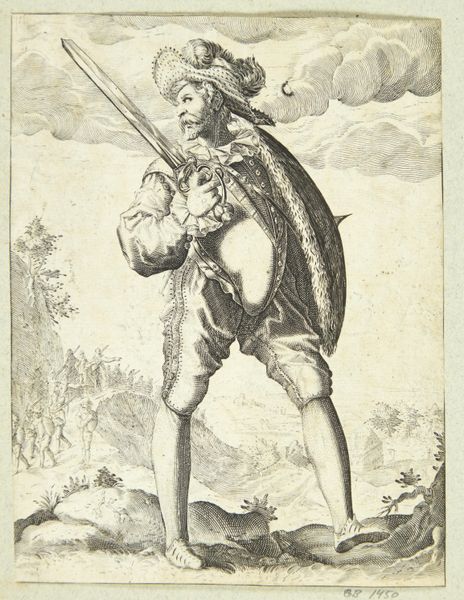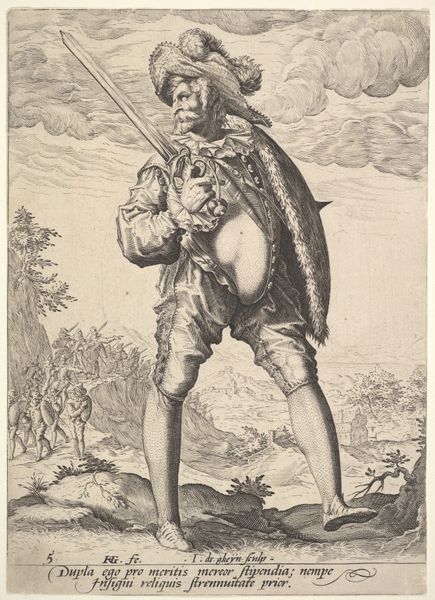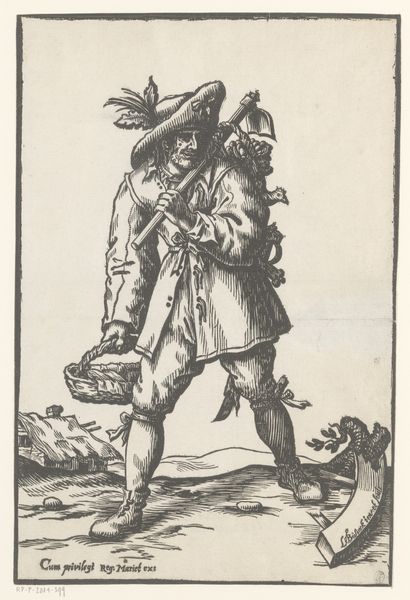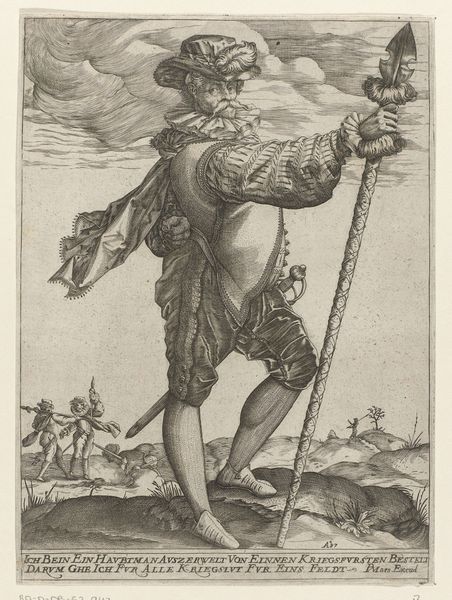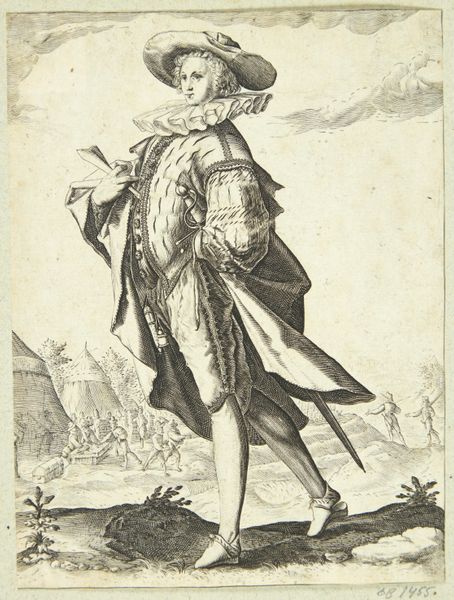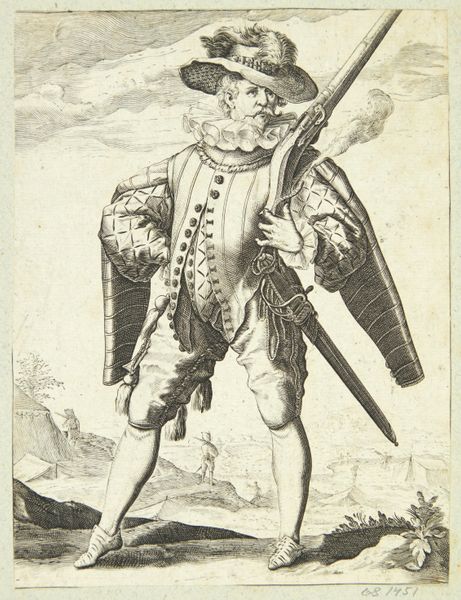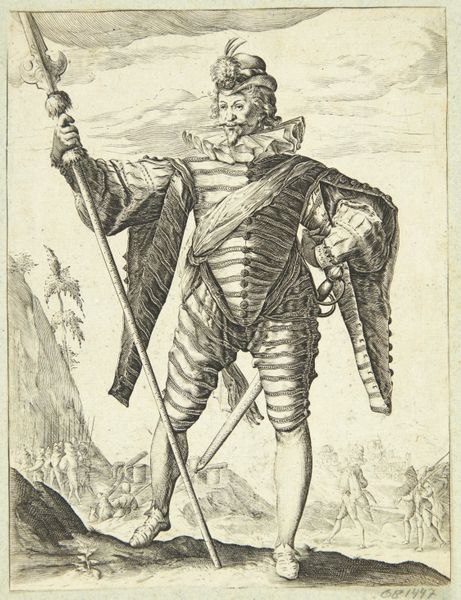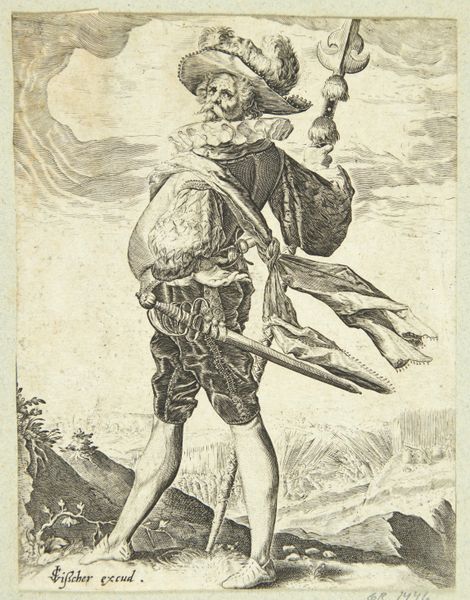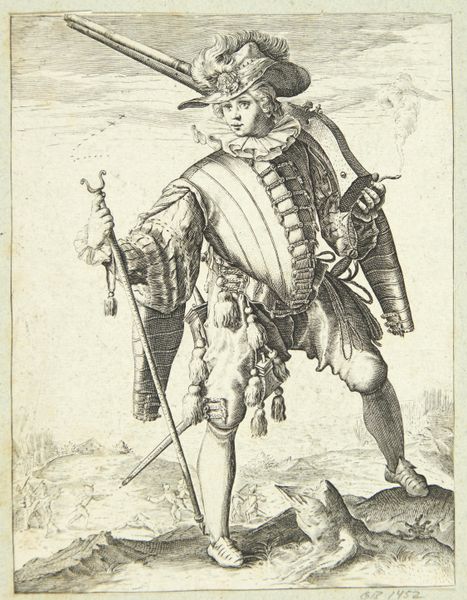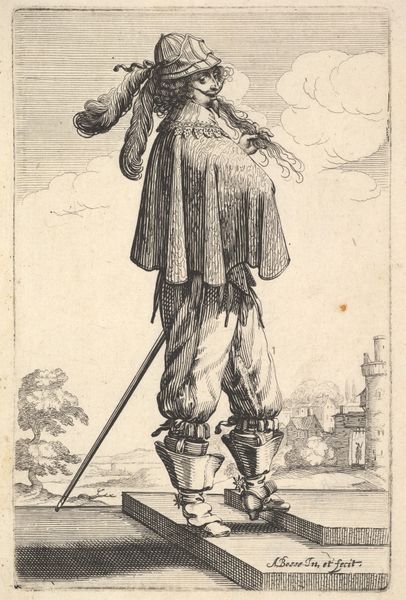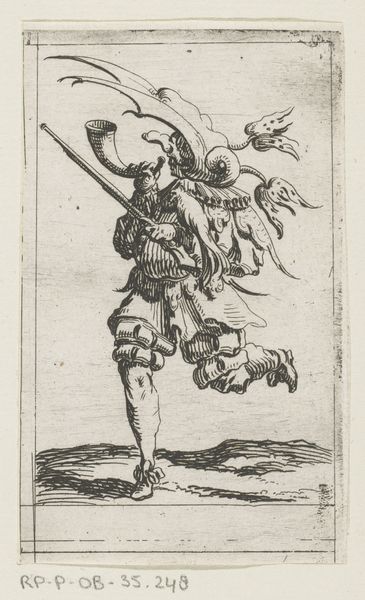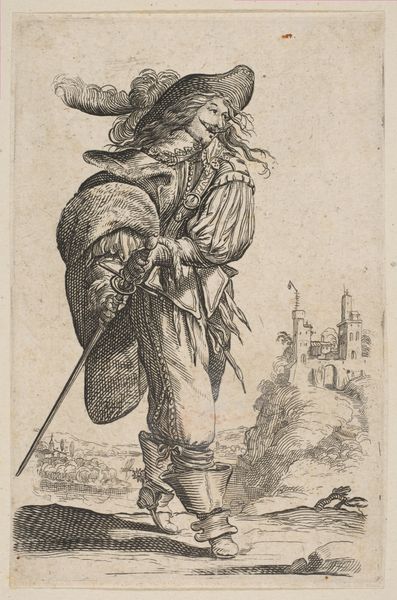
print, engraving
#
portrait
# print
#
mannerism
#
figuration
#
line
#
history-painting
#
engraving
Dimensions: 139 mm (height) x 106 mm (width) (bladmål)
Curator: Let's consider "En sergent," an engraving from 1595. It's a full-length portrait of a military figure. What are your initial impressions? Editor: The commanding figure, dominating the landscape, evokes an almost theatrical bravado. It’s visually striking, but a bit chaotic. There is a tension, almost dissonance in its busyness. Curator: Indeed. Look closely at the printmaking technique. The use of line, its density and direction, shapes the textures and volumes we see. What stories do those materials and processes tell about artistic labor and exchange during that era? Engravings like this weren't just aesthetic objects, but vital means of communication, circulating images and ideas throughout Europe. Editor: I see that. There is clearly careful execution of form. Note the precision used in the rendering of the figure’s garb—the ruff, the puffed sleeves, and patterned hose. They create a distinctive silhouette that suggests a sense of hierarchy and command. And see the angle of the arm extending toward some unknown foe. Curator: I find that the social context of these images reveals a complex interplay of power, patronage, and propaganda. The figure is not merely an individual, but represents a social role, perhaps a military commander or a nobleman asserting his authority through martial display. This work, as a print, becomes accessible, reusable, a commentary on labor. Editor: I can't help but marvel at how the composition directs the viewer’s eye. How each precise stroke builds up an almost ornate impression—the formal effect is one of meticulously constructed drama. Notice the subtle way that the light falls, how the balance directs us around and around. Curator: It's fascinating to consider this image as part of the broader printmaking industry of the time. The reproduction and distribution of prints allowed for wider dissemination of aristocratic values, and created social and cultural connections, but it came with labor considerations that cannot be ignored. Editor: Right, but as an artwork it really succeeds. There's so much artifice involved—all these minute articulations contributing to a very singular expression of might and self-possession. A clear aesthetic order emerges out of it all. Curator: In the end, I suppose we can admire the image itself while remembering it as part of a network. It reflects on society, and perhaps on its cost. Editor: I can appreciate that. It provides another perspective and understanding to a unique individual whose formal qualities can stand apart.
Comments
No comments
Be the first to comment and join the conversation on the ultimate creative platform.
